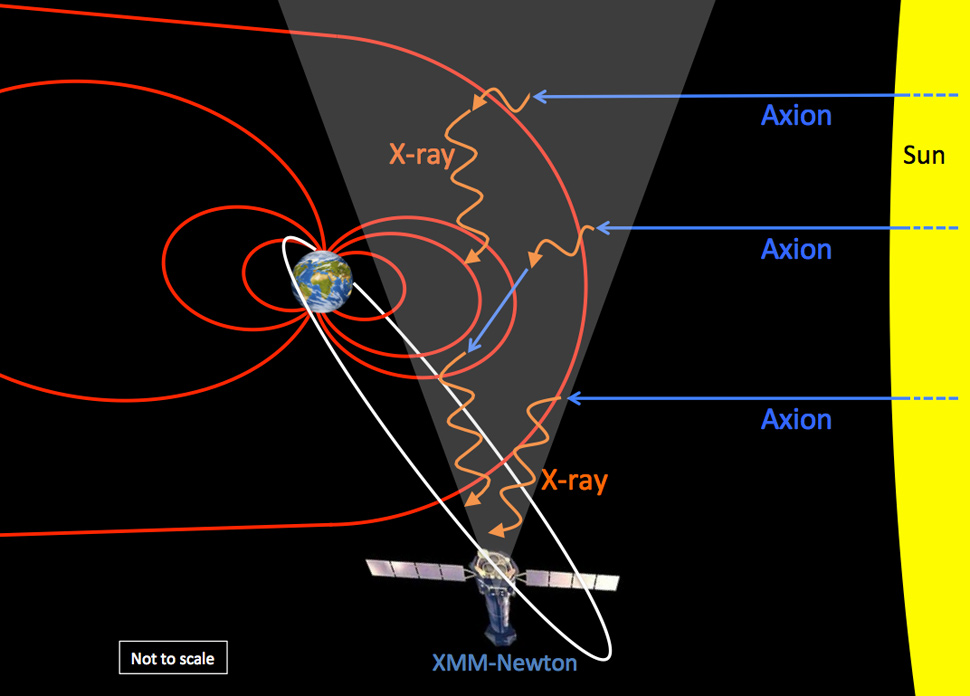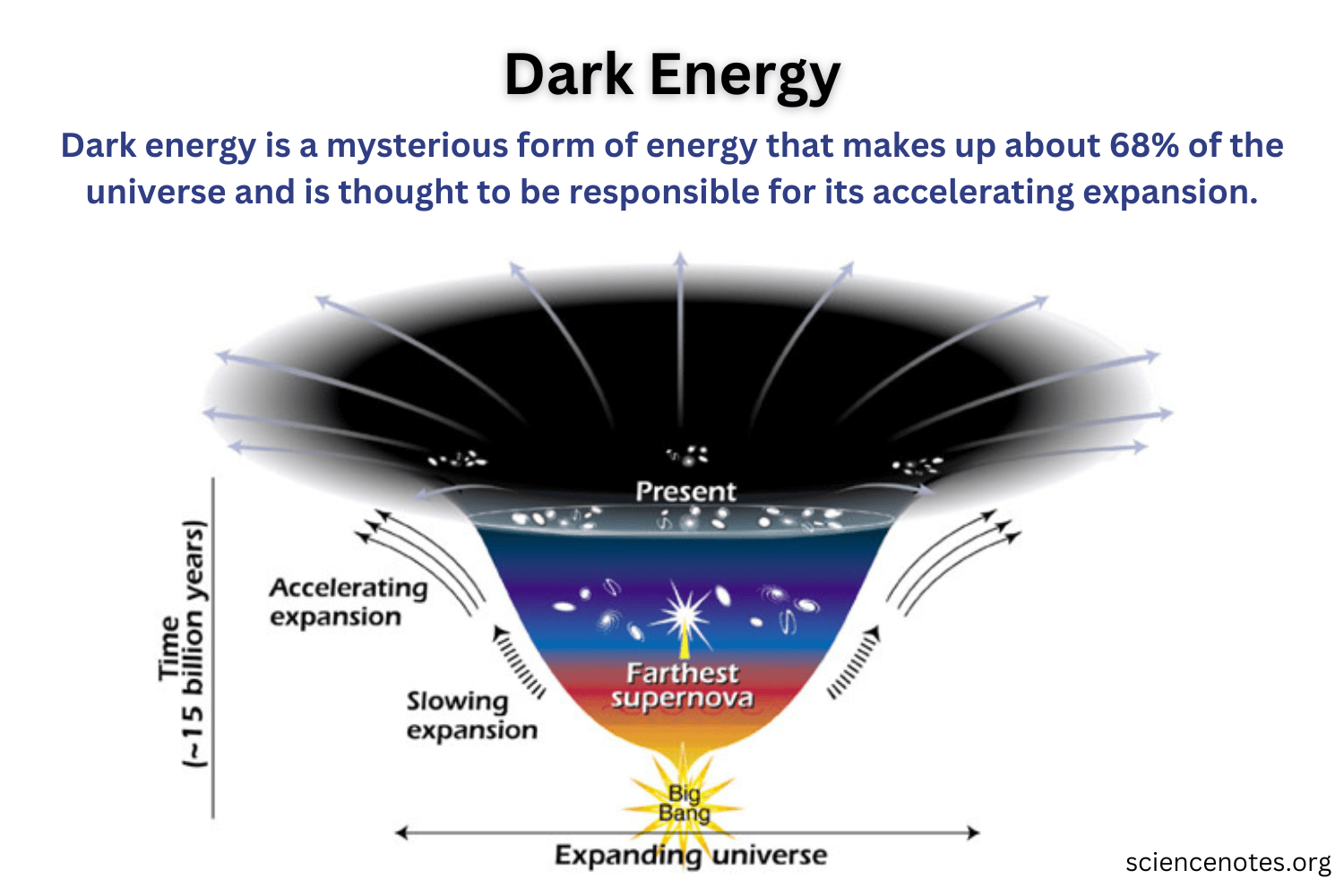
Axions: Key to Understanding Dark Matter and Particle Physics
Axions, a significant candidate for dark matter, have long intrigued scientists seeking to unlock the universe’s mysteries. These hypothetical particles may hold the key to understanding dark matter, which comprises a staggering 85% of the universe’s mass yet remains elusive to direct observation. Recent groundbreaking experiments led by interdisciplinary teams from Harvard University and King’s College London are paving the way towards detecting axions, utilizing quasiparticles as innovative tools in this quest. The findings underscore the vital role axions play in particle physics and their potential applications in advancing quantum technologies. As researchers delve deeper into the world of axions, they inch closer to unraveling the secrets of our cosmos, pushing the boundaries of modern science.
Within the realm of particle physics, researchers are increasingly focusing on elusive particles known as axions, thought to be foundational in explaining dark matter’s nature. These hypothetical entities, often described as fundamental building blocks of the universe, present exciting possibilities for enhancing our understanding of cosmology. The recent experiments utilizing quasiparticles provide powerful methods for axion detection, offering new pathways for research and development in quantum technologies. As attention turns to these enigmatic particles, the scientific community anticipates breakthroughs that could revolutionize our comprehension of the universe’s dark components. Consequently, the ongoing exploration of axions stands as a beacon of hope in solving some of the greatest questions facing modern physics.
The Search for Axions: A New Frontier in Particle Physics
The quest for axions has become a thrilling endeavor in the realm of particle physics, captivating researchers across the globe. Originating from theoretical frameworks designed to address dark matter, axions are predicted to fill the gaps in our understanding of the universe’s composition. As scientists explore new experimental paradigms, the conversation surrounding dark matter has evolved, with axions at the forefront of this research. With more advanced techniques and interdisciplinary collaborations, researchers are now capable of seeking tangible evidence for axions, which could transform our grasp of particle physics and cosmic phenomena.
In this revolutionary study led by Harvard and King’s College London, evidence is mounting that axions could play a pivotal role in elucidating enigmatic concepts surrounding dark matter. Key to these findings is the innovative use of quasiparticles, modeled after axions, which act as proxies in detecting the elusive particles. With advancements in quantum technologies and materials science, researchers are enhancing their ability to observe these quantum states, bridging theoretical predictions with experimental realities. As the search intensifies, the implications of finding axions extend beyond particle physics; they could reshape our understanding of the universe’s composition and origin.
Quasiparticles: The Key to Understanding Dark Matter
Quasiparticles have emerged as crucial elements in the search for dark matter, serving as proxies that provide insights into the presence of fundamental particles like axions. Their unique interactions within various materials allow researchers to simulate and detect phenomena that are otherwise unobservable. In the recent experiments involving manganese bismuth telluride, scientists have not only confirmed the dynamics of axion quasiparticles but also utilized their behavior to advance the technology needed for ongoing dark matter research. This innovative methodology offers researchers a more sensitive and nuanced detection mechanism, promising accelerated discovery timelines.
The application of quasiparticles in dark matter research also opens up a plethora of opportunities in quantum technologies. By examining the properties of axion quasiparticles, researchers can foster developments in new materials and quantum devices. These advancements may lead to revolutionary applications from enhanced sensors to groundbreaking computing technologies. The interplay between particle physics and material science, highlighted by the dynamic role of quasiparticles, illustrates a significant pathway toward not only understanding dark matter but also harnessing its principles for technological progress.
Harnessing Quantum Technologies for Dark Matter Detection
The intersection of quantum technologies and dark matter detection is a rapidly advancing field that holds promise for groundbreaking discoveries. Recent advancements demonstrate how quantum materials can be tailored to detect lossy axion particles in a controlled environment. Innovation in ultrafast laser optics and precise nano-fabrication techniques have become instrumental in achieving this goal, enabling researchers to observe axion quasiparticles in their native states. This synergy between theoretical foundations and practical applications exemplifies how quantum technologies are poised to unlock the mysteries of dark matter.
As scientists refine their techniques and explore new materials, the prospect of detecting dark matter becomes increasingly feasible. The developments surrounding axion quasiparticles show potential akin to the breakthroughs leading to the discovery of the Higgs Boson. The emphasis on quantum technologies in this context highlights their role in fine-tuning experiments and improving detection sensitivity. By tapping into the principles of quantum mechanics, the research community is laying the groundwork for unprecedented advancements in our understanding of dark matter and the fundamental structure of the universe.
Axion Polariton: A New Light-Matter Interaction
The introduction of axion polaritons is pioneering a new frontier in the study of light-matter interactions, further enriching the dialogue on dark matter research. This novel formation, born from the interaction of axion quasiparticles with photons, illustrates the sophisticated dynamics that quantum materials can unveil. Researchers are enthusiastic about the potential applications of axion polaritons, with implications that stretch from fundamental physics to applied technological innovations.
Understanding axion polaritons is crucial for developing sensitive detectors aimed at identifying dark matter signals. By capturing and manipulating these interactions, scientists can tune into the specific frequencies emitted by axions, which could lead to breakthroughs in dark matter observation. This innovative approach not only deepens our comprehension of particle physics but also serves as a fundamental step towards the practical realization of dark matter detection technologies.
The Challenges in Detecting Dark Matter Axions
Despite the progress made in axion research, significant challenges remain in confirming the existence of dark matter axions. Their characteristics make them notoriously difficult to detect, demanding precise experimental conditions and cutting-edge technology. The delicate work involved in fabricating materials like manganese bismuth telluride into 2D structures exemplifies the intricate nature of this research. Environmental sensitivities and the requirement for ultra-pure conditions represent significant hurdles that researchers continually strive to overcome.
Moreover, distinguishing axion interactions from background noise presents another layer of complexity. As researchers navigate these challenges, each experimental advancement that brings them closer to detecting axions provides vital learning experiences that refine their methodologies. Collaboration across disciplines is vital to overcoming these obstacles, as experts in condensed matter physics, high-energy physics, and materials science unite in the quest to uncover the true nature of dark matter.
Future Directions for Axion Research
Looking ahead, the future of axion research appears to be brimming with potential and promise. Researchers are eager to push the boundaries of their experimental capabilities and dive deeper into the properties of axion quasiparticles. Strategically refining experimental techniques to improve precision and sensitivity will be key in facilitating the next wave of discoveries. With ongoing collaborations and a spirit of scientific curiosity, the search for dark matter axions is set to forge new paths in particle physics.
Furthermore, the integration of artificial intelligence and data analytics in experimental physics could enhance the ability to interpret results and identify potential signals indicative of axions. Continuous funding and interest from institutions underscore the importance of this research in understanding the cosmos. As protocols become more sophisticated and equipment more advanced, the realization of detecting dark matter could transition from theoretical aspirations to concrete reality, resonating across the scientific landscape.
The Role of Interdisciplinary Collaboration
Interdisciplinary collaboration is essential in the pursuit of axion research, driving innovation and understanding in both theoretical and experimental frameworks. By merging expertise from condensed matter physics, material chemistry, and high-energy particle physics, researchers create a rich tapestry of knowledge that fuels discoveries. Such collaborations enable scientists to confront obstacles in axion detection with a unified strategy, maximizing resources and facilitating unique approaches to challenging problems.
The recent findings regarding axion quasiparticles underscore the importance of collective scientific efforts. By sharing ideas and methodologies, teams can introduce novel concepts and technologies that might otherwise remain unexplored in isolation. As these interdisciplinary alliances expand, the potential for pioneering breakthroughs in dark matter research only amplifies, allowing science to advance collectively towards a greater understanding of the universe.
Theoretical Implications of Axion Discovery
The potential discovery of axions would trigger profound implications for our understanding of the universe at both a fundamental and cosmological level. Currently considered as one of the leading candidates for dark matter, the verification of axions could reshape existing models in particle physics. Not only would this confirm the integral role of dark matter in the universe’s mass and structure, but it could also reveal new physics that builds upon our current understanding of particle interactions.
Theoretical physicists have long speculated that axions could provide a mechanism for unifying forces in nature, linking gravity to electromagnetic and nuclear forces. By uncovering the mysteries of axions, researchers may unlock a deeper comprehension of the universe’s architecture, offering insight into phenomena such as cosmic inflation and the formation of galaxies. This unfolding narrative illustrates the far-reaching implications that axion research holds, emphasizing why the scientific community remains steadfast in its pursuit.
Previous Milestones in Axion Research
The journey toward understanding axions has been marked by significant milestones that have propelled research in this field. From the initial theoretical proposal by Frank Wilczek, which sparked interest in this elusive particle, to the development of experimental methods designed to detect axions, each step has contributed to the ongoing exploration of dark matter. Notable advancements such as the introduction of axion-like particles and various detection techniques have continually refined the search and solidified the theoretical underpinnings.
As findings accumulate and technologies evolve, the landscape of axion research continues to shift dynamically. These milestones not only reflect progress in the scientific community’s understanding but also serve as benchmarks that guide future experiments. The excitement surrounding recent discoveries, such as the simulation of axion quasiparticles, reinvigorates interest and engagement within the field, signaling that the ultimate goal of confirming axion existence may be closer than ever.
Frequently Asked Questions
What are axions and why are they significant for dark matter research?
Axions are hypothetical elementary particles proposed as candidates for dark matter, which makes up about 85% of the universe’s mass. They are significant because their detection could unravel fundamental questions in particle physics and cosmology, helping to explain the mysterious nature of dark matter.
How do researchers hunt for axions using quasiparticles?
Researchers utilize quasiparticles to simulate axion behavior and create detection mechanisms. In recent experiments, teams have used materials like manganese bismuth telluride to generate axion quasiparticles. When these quasiparticles interact with actual dark matter axions, they release detectable signals, indicating the presence of dark matter.
What is the relationship between axions and quantum technologies?
Axions play a pivotal role in developing new quantum technologies. By harnessing the unique properties of axion quasiparticles, researchers can create advanced detection systems for dark matter and explore new light-matter interactions, such as axion polaritons, which could lead to innovative applications in quantum optics.
What experiments have confirmed the existence of axion quasiparticles?
Groundbreaking experiments led by Harvard University and King’s College London have utilized ultrafast laser optics and precision nano-fabrication techniques to confirm the existence of axion quasiparticles in materials like manganese bismuth telluride. These experiments have successfully demonstrated the coherent behavior and complex dynamics of these quasiparticles.
How could the detection of axions impact our understanding of the universe?
Detecting axions could provide profound insights into the composition and history of the universe, addressing key questions in astrophysics and particle physics. It could also help explain phenomena related to dark matter and refine existing models about cosmic structures and evolution.
What technological advancements are expected from axion research?
Axion research is expected to lead to advancements in both detection technologies for dark matter and in quantum technologies. Innovations may include more accurate dark matter detectors, improved quantum materials, and novel applications in light-matter interactions, enhancing our understanding of fundamental physics.
What role do interdisciplinary approaches play in axion research?
Interdisciplinary approaches are crucial in axion research as they integrate knowledge from condensed matter physics, material chemistry, and high-energy physics. This collaboration allows scientists to overcome challenges in detecting axions and drives innovations in experimental methods and technologies.
What future experiments are planned for studying axions?
Future experiments aim to probe dark matter axions more directly and refine experimental techniques to enhance detection precision. Researchers are committed to advancing their understanding of axion quasiparticles, with the goal of ultimately confirming their existence as a component of dark matter.
| Key Points | Details |
|---|---|
| Researchers Confirm Existence of Axions | A team from Harvard University and King’s College London has made significant progress in confirming axions, a leading candidate for dark matter. |
| Importance of Axions | Axions are theorized to explain dark matter, which makes up about 85% of the universe’s mass. |
| Groundbreaking Experiment | The research utilized axion quasiparticles as a detection method for dark matter interactions. |
| Innovative Materials Used | Manganese bismuth telluride was employed to create an ideal platform for axion quasiparticle research. |
| Technological Implications | The findings could lead to novel optical applications and advancements in dark matter detection technologies. |
| Ongoing Research and Future Goals | The team plans to refine experimental conditions to enhance precision in exploring axion properties. |
Summary
Axions are believed to be a fundamental building block of dark matter, a mysterious component that constitutes most of the universe. Recent research led by a team of scientists from Harvard and King’s College London advances our understanding of axions by utilizing quasiparticles to potentially detect these elusive particles. As researchers explore the properties of axion quasiparticles, the implications could revolutionize our understanding of dark matter and its role in the cosmos.



